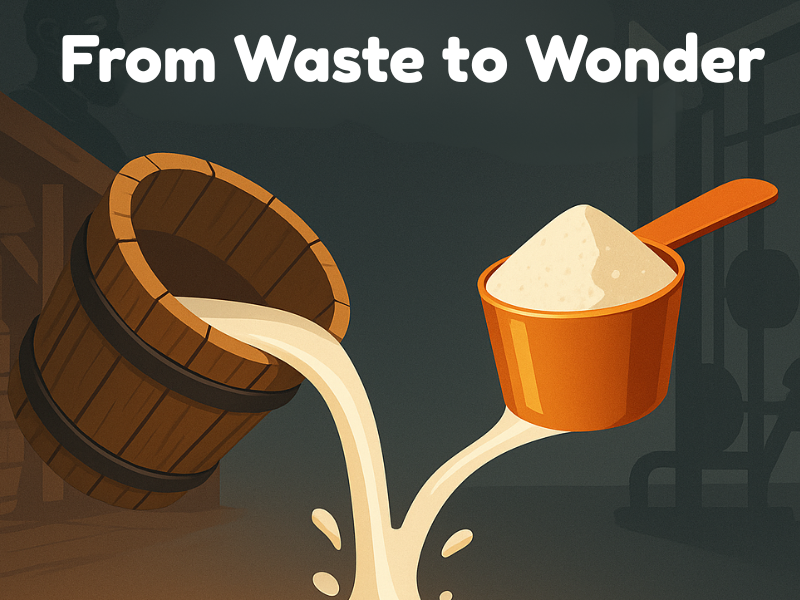Once dismissed as a byproduct of cheese-making, whey protein has journeyed from being “dairy waste” to becoming one of the most celebrated fitness supplements in the world. Its transformation is a fascinating story of discovery, innovation, and science.
From Cheese Vat to Exploration
Small European dairies are where the story starts, centuries ago. Whey, a thin, watery liquid, and solid curds formed naturally when milk was curdled to make cheese. Cheesemakers threw away this liquid for generations because they thought it was worthless.
A wealth of nutrients, especially premium proteins and necessary amino acids for muscle repair and general health, were concealed in that pale residue. What was once considered trash would soon become a vital component of contemporary diets.
Early Recognition of Ancient Wisdom
The advantages of whey were recognized even in ancient Greece. The father of medicine, Hippocrates, suggested whey as a healing tonic to promote immunity and healing. Later, the Roman physician Galen included it in his remedies for strength and vitality.
Whey had gained popularity throughout Europe by the 16th century. "Whey spas" appeared in England and Switzerland, where patrons bathed or drank in whey in the hopes of promoting longevity, improving complexion, and cleansing the body.
A Breakthrough Occurs in the Industrial Age
The 19th century was a watershed. Plasmon, the first powdered whey product, was created by German scientists. It had no taste, but it was revolutionary for nutrition and medicine.
Eugen Sandow, the renowned strongman and forerunner of contemporary bodybuilding, took notice of this. Sandow praised Plasmon's role in endurance and muscle building, endorsing it as a better substitute for meat. Whey made its formal debut in the field of sports nutrition with this.
Performance, Purity, and Science
In the modern era, whey protein has developed into a scientifically proven supplement that is favored by athletes, fitness fanatics, and general health-conscious people.
Whey is separated into concentrate, isolate, and hydrolysate by modern processing; each has special advantages, such as quick absorption and a high protein, low fat content. Whey has gained international recognition as a clean and efficient food source due to its certification, testing, and adaptability.
Read the full story: "From Dairy Waste to Fitness Fuel: The Story of Whey Protein"
Contributed by QNT Sport India.





Comments